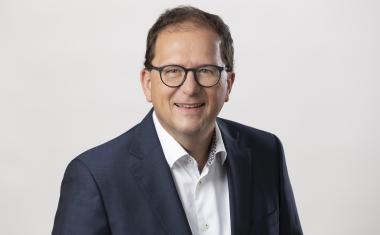Personalized Medicine In Spain


The Spanish biotechnology sector has enjoyed major innovative, scientific and business activity in recent years, leading to its consolidation. A strong scientific base, highly qualified human capital, state-of-the-art infrastructures and technologies, an integrated health system and strong governmental support have turned the Spanish biotechnology and pharmaceutical sector into one of the most dynamic and competitive emerging industries internationally.
Spain is in fourth place worldwide regarding the number of scientific publications on biotechnology, and has developed new technologies and innovative infrastructures to provide impetus and foster the growth of more than 500 biotechnology companies. Dynamism in the sector is clear for all to see with annual growth rates in excess of 30 % in terms of the number of new companies and employment creation.
The driving force behind the industry has been strengthened further by strong government support in the form of a range of subsidies and incentives to encourage innovation, new venture capital funds specialized in biotechnology that facilitate the consolidation of small companies, and a favourable legislative framework.
The consolidation process currently underway in the Spanish biotechnology sector is further bolstered by first-class Spanish scientific talent. The Spanish scientific community is renowned around the world, as demonstrated by the fact that 66 % of researchers working in the public R&D system are cited in North American patents.
An Integrated Health System
Spain has an extensive network of 800 public, private and university hospitals that are the backbone of an extremely dynamic, collaborative and innovative health system, which enables the execution of research projects in conjunction with other centres of scientific excellence. This infrastructure provides an excellent scenario for the implementation of highly productive translational medicine and research, which enables optimum results in the prognosis, prevention, diagnosis and design of new medicines for illnesses that have major local and worldwide impacts.
Personalized Medicine
This health system is especially suited for the development of personalized medicine, a recent trend that is prospering in Spain and constitutes the health model of the future. It is a question of medicine susceptible to being applied to specific patient segments in accordance with their genetic profiles. Each group of patients responds differently to a type of treatment. There is therefore an opportunity here to create new tools for distinguishing genetic sub-populations of patients, and for developing preventative methods and therapies aimed specifically at each type of patient. The evolution of this type of medicine, involving the development of new technologies for diagnosis, search for biomarkers, development of micro-arrays or genetic silencing, not only involves a revolution from the technological point of view, but also a revolution in medical practices as we understand them today.
A classic example dates back to 1998, when biotechnology company Genentech launched its Herceptin medicine. It was exclusively aimed at 30 % of breast cancer patients who have a genetic mutation called HER2, which fosters the growth of the tumour. The advantage of the medicine resides in the fact that it only acts against tumour cells with the HER2 mutation and does not therefore damage healthy tissue. It has very low-level side effects in comparison to other medicines or therapies, especially chemotherapy. The treatment is personalized because it is only used in patients with the mutation. If they do not have it, it would serve no purpose, because there would be nowhere for the medicine to act.
Business Opportunities In Spain
Personalized medicine already exists. Major multidisciplinary projects are currently in the pipeline, not only nationally but also across Europe and around the globe, with the participation of a large number of Spanish companies and research centres. Spanish participants are capable of providing foreign companies with a wide range of products, to complement their technological capacities or to acquire leads to strengthen their own portfolios. As in the rest of the global market, personalized medicine in Spain is a sector at an early stage of development. It is very likely that there are many more biomarkers waiting to be discovered; a process that could take years to complete. Public and private research groups in Spain are strongly committed to working on technological advances in personalized medicine. This is the case for the Spanish company Sylentis (Zeltia group), which is developing new therapeutic targets by using RNAi molecules; one of the mechanisms for the control of gene expression in specific patient groups, which enables improved results in their treatment.
Several Spanish companies are working on personalized medicine. A good example is Neocodex, a company centring its R&D on the search for and validation of genetic biomarkers using large-scale studies of the human genome. This company has set up the largest bank of ADN samples in Spain in collaboration with an extensive network of hospitals around the country, which complete the value chain for the application of personalized medicine from the start to the end of the health cycle of a patient.
There are also large research centres all around Spain in which research is carried out in the field of RNAi, such as the Spanish National Research Council, the Centre for Genomic Regulation, the Barcelona Science Park, the Spanish National Cancer Research Centre, and the Centre for Biomedical Research Alberto Sols. These research centres and Spanish university laboratories provide excellent opportunities for in-licensing of possible therapeutic targets and in turn offer a robust support network of scientific knowledge and skills for foreign companies in Spain.
In 2010 alone, the world diagnosis market is expected to be worth €30,000 million directly linked to the first stages of the value chain of personalized medicine. Spain will not be left on the sidelines of this impact on the health market and is currently developing a range of technologies, not only to take advantage of advances in the prevention of illnesses, but also to link results to the treatment of illnesses with new personalized technologies.
Spain has developed a propitious environment for personalized medicine around this technological base centred on an integrated health system highly accessible to patients, which enables biotechnology companies working in the field to gain access to a large network of biomedical practices and research, with numerous hospitals in which genetic samples can be obtained and clinical tests of new medicines and therapies can be carried out.
Company
Invest in SpainC/Orense 58,3rd Floor
28020 Madrid
Spain
most read

Relocation of Chemicals Production Footprint in Full Swing
A new Horváth study based on interviews with CxOs of Europe’s top chemical corporations reveals: The majority of board members expects no or only weak growth for the current year.

ECA Foundation Aims to Become Largest Pharma Association for GMP/GDP Compliance
The ECA Foundation, one of the most important not-for-profit organizations for regulatory expertise in the pharmaceutical industry, aims to become the largest independent GMP/GDP organization in the world.

ISPE Good Practice Guide: Validation 4.0
The Validation 4.0 Guide provides a comprehensive approach to ensuring product quality and patient safety throughout a pharmaceutical product's lifecycle.

Pharma 4.0 – the Key Enabler for Successful Digital Transformation in Pharma
Part 1: Building a Business Case for Pharma 4.0

Lead or Lag: Europe’s AI Materials Race
How AI and Robotics are reshaping the race for materials discovery.










